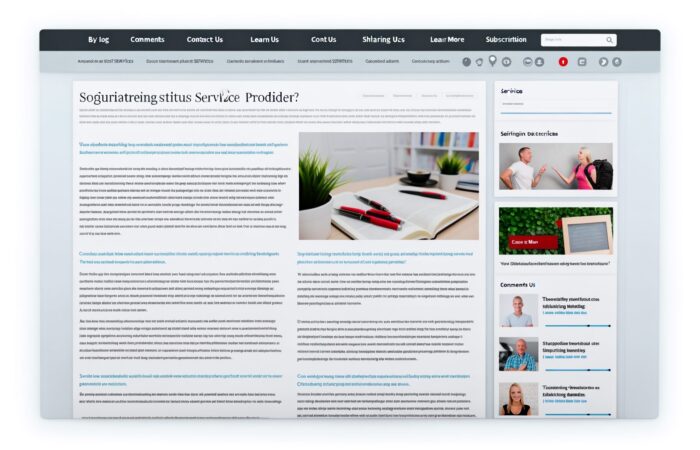Introduction to Ideation Systems in Content Creation
Today, let’s embark on a journey to understand the epicenter of all content creation — ideation systems.
Ever heard of the phrase, “Ideas are the starting points of all fortunes”? It’s a piece of wisdom from Napoleon Hill that stands incredibly relevant in the contemporary world of content creation. If you’ve dabbled in content creation or if it’s your bread and butter, you’re probably nodding along. You know the power of a stellar idea! But, where do these ideas come from? How do they transform into engaging content? That’s where our friend, the ‘Ideation System’, comes into play.
So, what exactly is an ideation system? Simply put, it’s a structured process designed to generate, develop, and communicate new ideas. It can be a manual system like jotting down thoughts on a notepad, or a sophisticated technology-enabled process. Regardless of the format, an effective ideation system is the backbone of consistent, high-quality content creation.
The ‘Idea’ Behind Ideation Systems
The ultimate purpose of an ideation system is to provide a continuous flow of fresh, engaging ideas. A robust ideation system is your ultimate weapon against the dreaded ‘creative block’ that every content creator occasionally battles. It’s that reliable reservoir that consistently fuels your creative engine.
Think of your ideation system as a beautiful, well-maintained garden. Each idea is a seed. An effective ideation process is akin to watering, nurturing, and tending to these seeds, enabling them to grow into healthy, full-fledged ‘Content Plants’. Sounds interesting, doesn’t it?
The Power of a Well-Oiled Ideation System
A well-designed ideation system is not just about generating ideas; it’s about generating valuable ideas. It aids in identifying and prioritizing ideas that resonate with your audience, align with your brand, and contribute to your content goals.
Moreover, a good ideation system is the one that promotes collaboration and diversity of thought. It encourages participation from different team members, each bringing their unique perspectives and insights. It welcomes all types of ideas – the good, bad, and even the bizarre – because who knows, the next ‘big’ thing might just be lurking around the corner!
So, ready to unlock a world of endless ideas? Stay tuned! In the upcoming sections, you’ll discover the building blocks of an effective ideation system, tools and technologies to supercharge your ideation process, and strategies to keep those idea juices flowing!
To all the content creators out there, remember, your ideation system is not just a tool, it’s your partner in the exciting journey of content creation. So, go ahead, cultivate it, cherish it, and watch the magic of ideas unfold!
Understanding the Importance of a Reliable Ideation Process
Imagine running a marathon without a route, or setting sail without a compass. That’s essentially what content creation becomes without a reliable ideation process. Now, if you’re wondering, “What’s the big deal about ideation anyway?” or “I have a bunch of ideas in my head, isn’t that enough?” let’s dive in, and you’ll see why it’s so crucial.
Why the fuss about Ideation?
Ideation is more than just a fancy word for brainstorming—it’s the creative process of generating, developing, and curating new ideas. It is the springboard for all content creation.
Having a reliable ideation process is akin to having a roadmap. It gives your content creation direction, keeping it relevant and focused. It also helps manage resources by ensuring that your creative energy isn’t wasted on irrelevant or unengaging content.
- Consistency: An effective ideation process ensures consistency in the quality and relevance of your content, making sure it resonates with your audience and meets their expectations every time.
- Innovation: A good ideation process not only maintains your content’s quality but also encourages innovation by continually seeking out fresh and unique ideas.
- Efficiency: With an ideation system in place, you can streamline your content creation process, reducing redundancy, and increasing productivity.
Let’s Talk Business
If you’re still not convinced, let’s look at it from a business perspective. In the digital age, content is king. It drives traffic to your site, increases your visibility, and establishes your brand. But it’s not just about creating content—it’s about creating quality content. And for that, you need a reliable ideation process.
A well-structured ideation process can bring a lot to the table for your business:
- Customer Engagement: By consistently producing relevant and engaging content, you can keep your audience hooked and coming back for more.
- Brand Recognition: Your content represents your brand. By maintaining a consistent voice and style through a well-planned ideation process, you enhance your brand recognition.
- Competitive Edge: With a well-oiled ideation process, you can stay a step ahead in the market by frequently introducing fresh and innovative content.
So, while a bunch of ideas in your head can get you started, a reliable ideation process is what keeps you going. It’s the fuel that drives your content engine, enabling you to consistently create engaging, relevant, and innovative content. And that, my friends, is why a reliable ideation process is an absolute game-changer in content creation.
Key Components of an Effective Ideation System
Let’s dive straight into the meat of the topic – the cornerstone of a well-oiled content creation machine – the key components of an effective ideation system! Now, before we get into the nitty-gritty, remember one thing – there’s no one-size-fits-all approach. What works for you may not work for others, and vice versa. But don’t worry, we’ve got you covered! Here are some universally useful components that can help you build an effective ideation system.
A Diverse Team:
First things first, gather a team with diverse skills and backgrounds. Why? Because different perspectives can lead to a plethora of unique and compelling ideas. This diversity can fuel creativity and innovation, making your ideation process much more fruitful and dynamic.
Encourage Free-thinking:
It’s important that everyone on your team feels comfortable sharing their thoughts and ideas, no matter how out-of-the-box they may seem. In the world of content creation, the wildest ideas often turn out to be the most successful ones. So, create an environment that fosters free-thinking and values all contributions.
Regular Brainstorming Sessions:
Conduct regular brainstorming sessions with your team. This is a fundamental step in any ideation system. It’s like the proverbial ‘stirring the pot’ to make sure all the ingredients mix well together. Brainstorming not only generates ideas but also helps to refine them.
Tools and Techniques:
Utilize different tools and techniques for idea generation and management. This could range from simple whiteboard sessions and sticky notes to advanced digital tools and software. These tools can help you keep track of your ideas and organize them effectively, which is crucial in the ideation process.
Feedback Mechanism:
Last but definitely not the least, establish an effective feedback mechanism. Feedback can help you identify any weak points in your ideas and improve upon them. It’s like the final polish that transforms a good idea into a great one.
So there you have it! The secret sauce to an effective ideation system. Remember, consistency is key. Make sure to keep the ball rolling and never stop innovating. Happy ideating!
Tools and Technologies to Enhance Ideation
Creating great content is rarely a solitary effort. It’s often the result of a joint creative process, where multiple minds bring their unique perspectives to the table. One way to maximize the creative potential of your team is by leveraging the power of technology. Let’s dive into some of the top tools and tech you can use to supercharge your ideation process.
Digital Brainstorming Tools
Remember those old-school brainstorming sessions around a whiteboard? They were fun, weren’t they? But let’s be honest, they weren’t always the most efficient. That’s where digital brainstorming tools come in.
Miro, for instance, offers a virtual whiteboard where team members can jot down ideas, organize them and even vote for their favorites. Tools like Stormboard allow real-time collaboration, making it a breeze to compile, discuss, and refine ideas, no matter where your team members are located.
Project Management and Organization Tools
Once you’ve got a pool of ideas, how do you keep them organized? Enter project management tools. Applications like Trello and Asana can help you categorize, prioritize, and track your ideas. They are straightforward to use and can be accessed from anywhere, enabling seamless collaboration between team members.
These tools help keep everyone on the same page and ensure that good ideas aren’t lost in the shuffle.
Inspiration and Research Tools
Coming up with fresh ideas consistently can be challenging, but don’t worry; there are tools for that too! Feedly is an excellent tool for keeping tabs on industry trends and finding inspiration. It aggregates news feeds from a variety of online sources, making it a one-stop-shop for all things topical and relevant.
Then there’s Quora, a fantastic resource for understanding what questions people are asking about specific topics. It’s like having a direct line to the collective curiosity of the internet!
Feedback and Analysis Tools
Last but certainly not least, let’s talk about feedback tools. Once you’ve put your ideas into action and created content, you’ll want to know how it’s performing. Tools like Google Analytics and SEMrush provide invaluable insights into how your content is received, allowing you to refine and optimize your ideation process further.
Remember, the real magic happens when you blend these tools to suit your unique needs. So go ahead, play around with different combinations and find what works best for your creative process.
Remember: technology is there to help you, not hinder you. Make sure the tools you choose align with your goals, are easy to use, and truly enhance your ideation process.
Strategies for Sourcing and Organizing Ideas
Let’s dive deep into some efficient strategies for sourcing and organizing ideas for your content. Remember, great content begins with a spark of creativity, but it flourishes through a methodical process of ideation. Here’s how you can master both aspects.
Sourcing Ideas
Let’s start with some effective techniques for sourcing ideas:
- Brainstorming Sessions: This is a tried and true method. Gather your team, set a timer, and let the ideas flow. Just remember, there are no bad ideas in brainstorming!
- Surveys and Interviews: Your audience is a gold mine of insights. Run surveys, conduct interviews, and find out what they’re interested in.
- Research Competitors: Keep an eye on what your competitors are doing. Not to imitate, but to innovate and do better.
- Social Listening: Social media can be a treasure trove of content ideas. Listen to the conversations, trends and hot topics.
Organizing Ideas
Now that you have a wealth of ideas, it’s time to organize them. Here’s how:
- Content Calendar: This is your best friend. Not only does it help with scheduling, but it also gives a clear overview of your content strategy.
- Priority Matrix: This is a great tool for categorizing ideas based on their impact and feasibility. It helps in making informed choices about what content to create next.
- Sticky Notes: Yes, the good old sticky notes. They are simple, visual and perfect for moving ideas around.
- Spreadsheets: When it comes to managing a large number of ideas, spreadsheets can be your go-to tool. They allow for complex sorting and filtering.
Remember, the goal is not to have the largest number of ideas, but to have the right ideas. So, don’t hesitate to remove ideas that no longer serve your content strategy.
And that’s it! Implement these strategies for sourcing and organizing ideas, and you’ll have a robust ideation system in no time. Ready to get started?
Implementing Feedback Loops for Continuous Improvement
Hey there, content creator! Let’s talk about a critical part of the ideation system that often slips under the radar— implementing feedback loops. No idea generation process is complete without it. So why don’t we dive right in?
Why Feedback Loops Matter
Picture this: you’re running a race with a blindfold. You’re unsure if the track is straight, has a turn ahead, or even if you’re close to the finish line. Sounds tricky, right? That’s what it’s like to navigate the content creation process without any feedback. Without it, you’re essentially moving through your process blindfolded!
A feedback loop is like having a compass. It helps you understand where you are, where you’re headed, and how far you’ve come. In essence, it’s about learning from past experiences and applying that knowledge to improve future efforts.
Types of Feedback Loops
Feedback loops can be:
- Internal: This is the feedback you get from your team. It’s the iterative changes you make based on internal reviews and evaluations.
- External: This is the feedback from your audience – comments, reviews, shares, likes, etc. It gives you a direct insight into what your audience likes and what they don’t.
How to Implement Feedback Loops
Now that we know feedback loops are essential and the types, let’s talk about how to implement them in your ideation process.
- Communicate: Ensure everyone on your team knows the significance of feedback and actively encourages it.
- Create a system: Have a structured process for collecting, analyzing, and implementing feedback. It could be as simple as a shared document or as elaborate as dedicated feedback software.
- Review regularly: Make it a habit to review feedback regularly. It keeps you updated and helps you make timely adjustments.
Above all, ensure that your feedback loops are designed to promote continuous learning and improvement. Remember, the goal isn’t to perfect your ideation process in one go, but to incrementally improve it over time.
Embrace the Power of Feedback
Never underestimate the importance of feedback loops in your ideation process. It’s like having an early warning system that alerts you if you’re veering off track or a cheerleading squad that keeps you motivated when you’re doing well. So go on, implement those feedback loops, and watch your content creation process transform for the better!
Case Studies: Successful Ideation Systems in Action
Now that you’ve got the groundwork, it’s time to dive into some real-life examples. Let’s shine a light on a couple of organizations that have masterfully employed ideation systems in their content creation process and reaped remarkable results.
Procter & Gamble: Co-creation in Action
Consumer goods giant Procter & Gamble pioneered an innovative ideation system known as ‘Connect and Develop’. This open innovation approach encourages not only internal but also external contributions, effectively turning the whole world into an R&D lab.
Through this system, P&G has consistently churned out top-notch products, keeping them at the forefront of the global market. An example is the Swiffer Duster, which was conceived from an Italian inventor’s concept of using a ‘fluffy sock’ to eliminate dust. By leveraging ideation and co-creation, P&G effectively turned a simple idea into a household staple.
Google: Time to Experiment
Google, known for its innovative approach, has a unique ideation system: the 20% time policy. This clever strategy allows employees to dedicate 20% of their work time to pursuing personal projects. This not only fosters creativity but also leads to the development of groundbreaking products.
Did you know that Gmail and AdSense were products of this 20% time policy? By giving employees the freedom to experiment and explore, Google has created an ideation system that produces successful and widely-used products.
Starbucks: Leveraging Customer Ideas
Starbucks takes a different approach to ideation by allowing customers to contribute ideas through their ‘My Starbucks Idea’ platform. This ingenious ideation system has led to the introduction of popular offerings like the Cake Pop and free WiFi across their stores.
Starbucks shows us the power of customer-centric ideation. Sometimes, the best ideas come from those who use your products the most – your customers.
In conclusion, these case studies highlight the power of a well-orchestrated ideation system. Whether it’s co-creation with external inventors, giving employees time to explore their passion projects, or leveraging customer ideas – a sound ideation system can turn a good idea into a great product.
Remember, the goal of an ideation system isn’t just to generate ideas but to create a process that uncovers the best ones and brings them to life. So, why not start weaving these practices into your content creation strategy? You might just stumble upon your next big idea.











No Comment! Be the first one.